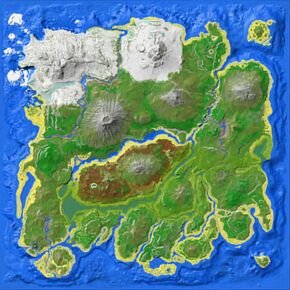
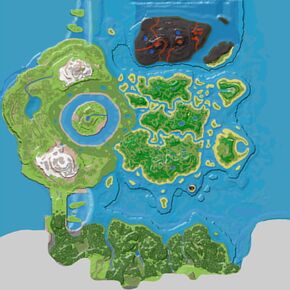
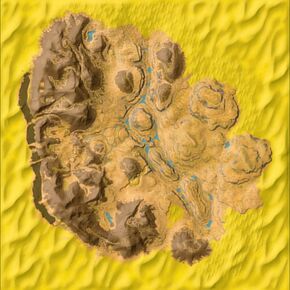
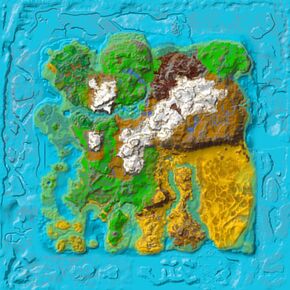
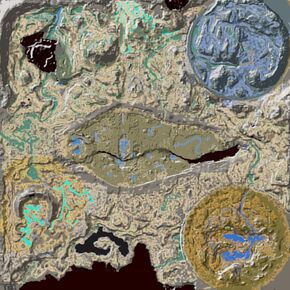
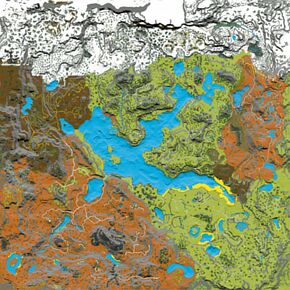
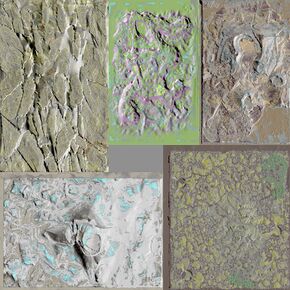
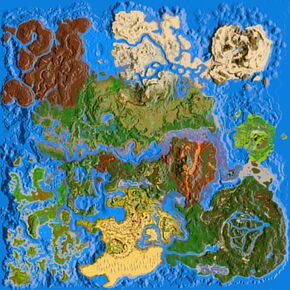
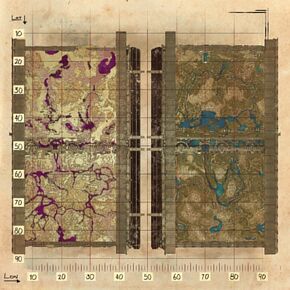
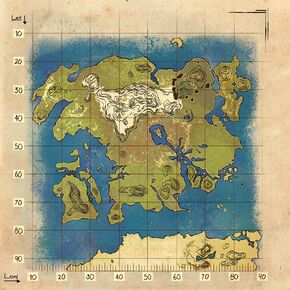
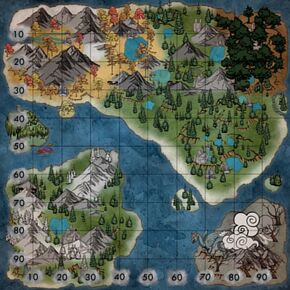
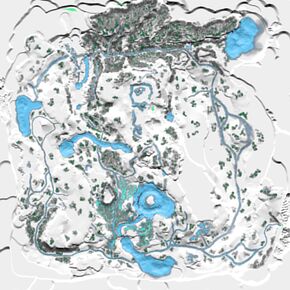
cheat summon Procoptodon_Character_BP_Ccheat SpawnDino "Blueprint'/Game/PrimalEarth/Dinos/Procoptodon/Procoptodon_Character_BP.Procoptodon_Character_BP'" 500 0 0 35Variant Procoptodon (Escort)
cheat summon Procoptodon_Character_BP_Escort_Ccheat SpawnDino "Blueprint'/Game/Genesis/Dinos/MissionVariants/Escort/Arctic/Procoptodon_Character_BP_Escort.Procoptodon_Character_BP_Escort'" 500 0 0 35Variant R-Procoptodon
cheat summon Procoptodon_Character_BP_Eden_Ccheat SpawnDino "Blueprint'/Game/Genesis2/Dinos/BiomeVariants/Procoptodon_Character_BP_Eden.Procoptodon_Character_BP_Eden'" 500 0 0 35Variant Procoptodon (Gauntlet2)
cheat summon Procoptodon_Character_BP_STA_Ccheat SpawnDino "Blueprint'/Game/Genesis2/Missions/ModularMission/Gauntlet2/STA/Dinos/Procoptodon_Character_BP_STA.Procoptodon_Character_BP_STA'" 500 0 0 35


























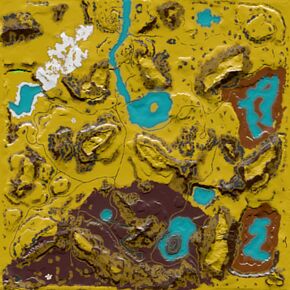

The Procoptodon is one of the creatures in ARK: Survival Evolved.
This section is intended to be an exact copy of what the survivor Helena Walker, the author of the dossiers, has written. There may be some discrepancies between this text and the in-game creature.
Procoptodon vivencurrus
TimePleistocene
DietHerbivore
TemperamentReactive
The first marsupial I've encountered on the Island is the Procoptodon vivencurrus. Standing nearly three meters tall, it is among the largest jumping creatures I've heard of. It is a fairly peaceful herbivore that will immediately flee when aggressed upon. One of Procoptodon's most unique features is its pouch. Unlike many pouched marsupials, Procoptodon's pouch is relatively dry and has little in the way of sticky or oily fluids. I assume this is good for the Joey, but I have not figured out exactly why yet. Its other unique feature, powerful hind legs, can knock back aggression much larger in stature. Procoptodons show great precision when leaping as if they can accurately target the landing without fail. I've seen them effortlessly hop and land from heights that would flatten other creatures.
It seems Procotopdon's knack for carrying things has increased its load-bearing capacity. Procoptodon's dry pouch makes it an excellent beast of burden that can carry far more than other creatures of its size. Additionally, it appears to provide an optimal environment for nourishing babies. So much that upon maturing, they have even more vigor.
The Procoptodon is similar to the ![]() Parasaur in behavior, and can be seen peacefully roaming around. Contrary to the Parasaur, wild Procoptodon will attack you if their level is higher than your own. The main attack Procoptodon execute is a powerful kick, that can send you and your tames soaring in the other direction.
Parasaur in behavior, and can be seen peacefully roaming around. Contrary to the Parasaur, wild Procoptodon will attack you if their level is higher than your own. The main attack Procoptodon execute is a powerful kick, that can send you and your tames soaring in the other direction.
Procoptodon are fairly rare on the island, and the areas that they inhabit are sometimes too full to hold them. To fix this, slaughter everything you can to try and get one to spawn. Be sure you know where they spawn (see spawn map above.) They enjoy congregating around the bottom of mountains, as they will eventually hop down if they spawn at the top. You can also find them on the flat zones around swamps. They also occasionally spawn on the north-east border of the island, towards the beaches.
It is important to note that unlike other herbivores, Procoptodon will not consume ![]() Crops nor
Crops nor ![]() Berries until tamed. Both adults and maturing animals will starve if left without berries. Rare Mushrooms are the best food for taming or feeding a Procoptodon.
Berries until tamed. Both adults and maturing animals will starve if left without berries. Rare Mushrooms are the best food for taming or feeding a Procoptodon.
A giant relative of modern kangaroos, Procoptodon is not a common herbivore when compared to the herds of Parasaurolophus and ![]() Phiomia that wander about the ARK. It could easily be mistaken for a normal kangaroo as well if it wasn't for the fact that it is bigger than a man. Closer looks show that it also has a much shorter face, reminiscent of a rabbit. This is also why it has a second name, The Short Faced Kangaroo.
Phiomia that wander about the ARK. It could easily be mistaken for a normal kangaroo as well if it wasn't for the fact that it is bigger than a man. Closer looks show that it also has a much shorter face, reminiscent of a rabbit. This is also why it has a second name, The Short Faced Kangaroo.
Like most Kangaroo species their feet are joined at the ankle, to improve locomotion via jumping, but this species appears to have only one toe whereas most have three and an elongated middle toe.
This section displays the Procoptodon's natural colors and regions. For demonstration, the regions below are colored red over an albino Procoptodon. The colored squares shown underneath each region's description are the colors that the Procoptodon will randomly spawn with to provide an overall range of its natural color scheme. Hover your cursor over a color to display its name and ID.
This information can be used to alter the Procoptodon's regions by entering cheat SetTargetDinoColor <ColorRegion> <ColorID> in the cheat console. For instance, cheat SetTargetDinoColor 0 6 would color the Procoptodon's "body" magenta.
This section displays the Procoptodon's natural colors and regions. For demonstration, the regions below are colored red over an albino Procoptodon. The colored squares shown underneath each region's description are the colors that the Procoptodon will randomly spawn with to provide an overall range of its natural color scheme. Hover your cursor over a color to display its name and ID.
This information can be used to alter the Procoptodon's regions by entering cheat SetTargetDinoColor <ColorRegion> <ColorID> in the cheat console. For instance, cheat SetTargetDinoColor 0 6 would color the Procoptodon's "main" magenta.


![]() R-Procoptodon is the R-variant of Procoptodon found in certain biomes of
R-Procoptodon is the R-variant of Procoptodon found in certain biomes of ![]() Genesis: Part 2. It is identical to the normal Proctodon, except for its colorful robe. It is tamable.
Genesis: Part 2. It is identical to the normal Proctodon, except for its colorful robe. It is tamable.
| Attribute | Base Value | Level Increase | Taming Bonus | ||
|---|---|---|---|---|---|
| Wild | Tamed | Additive | Multiplicative | ||
| 400 | +80 | +5.4% | 0.105 | ||
| 350 | +35 | +10% | 0.1 | ||
| 150 | +15 | +10% | |||
| 1500 | +150 | +10% | |||
| 550 | +11 | +4% | |||
| 20 | +1 | +1.7% | 2.8% | 11% | |
| 100% | N/A | +1% | |||
| 350 | +21 | N/A | 0.5 | ||
Type in values of a wild creature to see on which stats it's emphasized. Green values on a high-level creature are very good for breeding. If you have already tamed your creature you can try to recover the breeding stats with an external tool.[1]
The stat-calculator does not work in the mobile-view, see here for alternatives: Apps
Note that after the creature is tamed it gets bonuses on some stats depending on the taming effectiveness. This makes it hard to retrieve the levels on a tamed creature, so this tool is only for wild ones, but gives a first impression, how well the stats are distributed.
| Bite |
|
|---|
| Kick |
|
|---|
| Pick Up |
|
|---|
| Jump |
|
|---|
Pouch Seat
The Procoptodon can carry with an extra player besides the rider or a small or baby creature inside its pouch.
Insulation
The Procoptodon's pouch provides 169 ![]() Hypothermic and
Hypothermic and ![]() Hyperthermic insulation to the player inside.
Hyperthermic insulation to the player inside.
Baby Care
If the Procoptodon is a female and it is ![]() Mate Boosted, its pouch reduces the baby's
Mate Boosted, its pouch reduces the baby's ![]() Food consumption by 50% and doubles the imprinting that the baby gets with each care.
Food consumption by 50% and doubles the imprinting that the baby gets with each care.
Reduced Fall Damage
The Procoptodon receives less fall damage than most of the creatures.
For general info about domesticating a wild creature see Taming.
Make sure you have a good source of stamina and speed to catch up with the Procoptodon as it flees. Immobilizing with a ![]() Chain Bola (Not the
Chain Bola (Not the ![]() Bola) can also work. Creatures like the
Bola) can also work. Creatures like the ![]() Dilo and
Dilo and ![]() Araneo can apply a slow effect if needed albeit the former cannot be ridden and is more inaccurate not to mention requiring micromanagement between Passive and Attack My Target.
Araneo can apply a slow effect if needed albeit the former cannot be ridden and is more inaccurate not to mention requiring micromanagement between Passive and Attack My Target.
| Time | |||||
|---|---|---|---|---|---|
| 9 | 2 | 1 | 1 | 0:09:00 | |
| 18 | 14 | 3 | 2 | 0:12:00 | |
| KO: | |||||
| Torpidity-depletion: 0.67 / s, Time until all torpidity is depleted: 00:08:45 | |||||
| Time | |||||
|---|---|---|---|---|---|
| 21 | 41 | 9 | 5 | 0:21:00 | |
| 42 | 84 | 19 | 10 | 0:28:00 | |
| KO: | |||||
| Torpidity-depletion: 1.11 / s, Time until all torpidity is depleted: 00:14:26 | |||||
| Time | |||||
|---|---|---|---|---|---|
| 34 | 115 | 27 | 14 | 0:34:00 | |
| 67 | 193 | 45 | 23 | 0:44:40 | |
| KO: | |||||
| Torpidity-depletion: 1.45 / s, Time until all torpidity is depleted: 00:18:19 | |||||
| Time | |||||
|---|---|---|---|---|---|
| 46 | 205 | 49 | 25 | 0:46:00 | |
| 92 | 331 | 79 | 40 | 1:01:20 | |
| KO: | |||||
| Torpidity-depletion: 1.75 / s, Time until all torpidity is depleted: 00:21:09 | |||||
| Time | |||||
|---|---|---|---|---|---|
| 59 | 320 | 78 | 39 | 0:59:00 | |
| 117 | 490 | 119 | 60 | 1:18:00 | |
| KO: | |||||
| Torpidity-depletion: 2.04 / s, Time until all torpidity is depleted: 00:23:22 | |||||
| Time | |||||
|---|---|---|---|---|---|
| 71 | 439 | 109 | 55 | 1:11:00 | |
| 142 | 666 | 165 | 83 | 1:34:40 | |
| KO: | |||||
| Torpidity-depletion: 2.31 / s, Time until all torpidity is depleted: 00:25:12 | |||||
Note that the values are for optimal cases, always bring extra supplies!
For a level-dependent count of resources needed, try an external taming calculator.
The Procoptodon only eats ![]() Rare Mushrooms and
Rare Mushrooms and ![]() Plant Species X Seeds. Once tamed, it can also be fed with
Plant Species X Seeds. Once tamed, it can also be fed with ![]() Crops and
Crops and ![]() Berries like other Herbivores.
Berries like other Herbivores.
A Rare Mushroom is equal to 75 food points and a Plant Species X Seed is equal to 50. It eats every 100 points of hunger.
This section describes how to fight against the Procoptodon.
While not the strongest, the Procoptodon can cause significant damage if it chooses to attack. However, they typically run away at high speeds rather than stand and fight. Make sure you can keep a fast pace if you hope to kill/tame one! Since the TLC update its dropkick ability makes it a lot more versatile in combat as it does not do lots of damage but has a large knock back making it hard to be hit. Partner this with the new huge jump and significantly reduced fall damage to get out of most tussles.
Large Bear trap, having someone carry you on a chase flyer, or just running it down on foot are the easiest. It can also be lured into a pen by making it aggro with Rare Flowers.
If you would like to tame them you should tranq them. Any method works.
The Procoptodon would rather run than fight. Chasing one on foot can result in straying too far into dangerous territory.
Unaggressive usually. Is very close-ranged.
Better at collecting berries than one would think. Use the kick attack and gather a ton of them and escape from predators quickly with one good jump! Be cautious about becoming over-encumbered.
The Procoptodon is capable of carrying the following baby or small creatures. They can be pouched using the radial menu or the 3rd action key (default C, ![]() ,
, ![]() ,
, ![]() ). If the Procotodon is mate boosted, the creature in the pouch will receive a food consumption reduction.
). If the Procotodon is mate boosted, the creature in the pouch will receive a food consumption reduction.
Once the baby hits a certain percentage of growth, it will automatically eject itself from the Procoptodon's pouch, and can not be placed back in. The following table shows creatures that can be put in the pouch.
Creatures marked as 100% are able to be in the pouch even as adults, otherwise it shows the maturation each species can stay in it.
Creatures marked as -0% need to be updated with the proper value.
For information pertaining specifically to the real-world Procoptodon, see the relevant Wikipedia article.
| Patch | |
|---|---|
| 229.0 | Procoptodon is added to the game |
| 229.1 | Fixed application of |
| 230.0 | Fixed Procoptodon pouch dismounting players through walls. |
| 230.1 | Fixed hat/accessory slot on Procoptodon. |
| 230.3 | Fixed Movement Speed stat for real. |
| 231.6 | Fixed exploiting with boarding Procoptodon pouch through walls or being pushed through walls while sitting in pouch. |
| 231.7 | Fixed issue with getting dismounted from the pouch due to terrain slopes. |
| 278.0 |
|
| 278.2 |
|
| 303.1 | Modified the drag weight of the Procoptodon so that it can no longer be picked up or grabbed by any creature except the |
| 329.3 |
| Patch | |
|---|---|
| 32.12 |
|
| 34.49 |
|
Procoptodon Bunny dossier from the Eggcellent Adventure event
TLC Patch 1 model update.